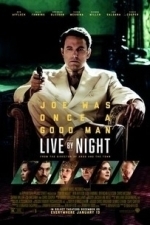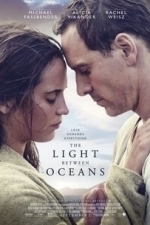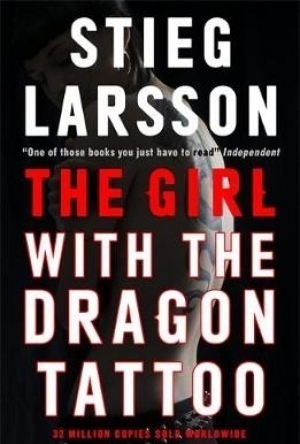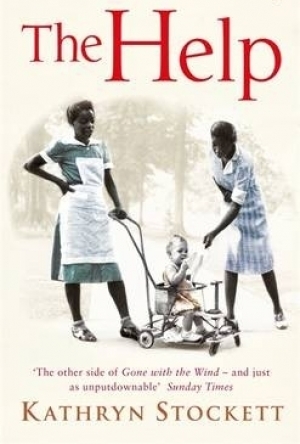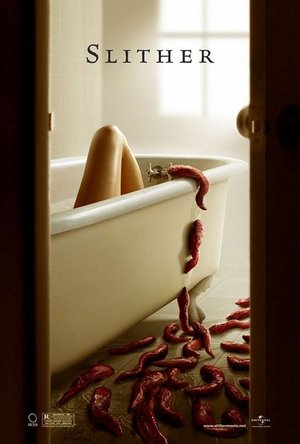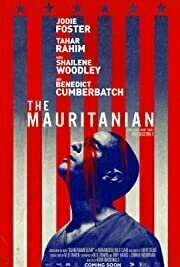
Topo Maps+
Navigation and Travel
App
Go Deeper into the Backcountry. ** ZDNet's 24 Best iPhone or iPad apps for 2017 ** Featured in Apps...

National Rail Enquiries: Train journey planner
Navigation and Travel
App
Stay on track with the free National Rail Enquiries App, Great Britain’s number one destination...

IntelliDrink PRO - Blood Alcohol Content (BAC) Calculator
Food & Drink and Health & Fitness
App
IntelliDrink is a sophisticated blood alcohol content (BAC) calculator. It has a simple user...

Ultimate Rugby Pro
Sports and Lifestyle
App
YOU HAVE ASKED, AND WE HAVE LISTENED! The world's #1 and best rugby app just got even better....
Bob Mann (459 KP) rated Live By Night (2017) in Movies
Sep 29, 2021
Morally bankrupted by his experiences in the trenches, Joe Coughlin (Affleck) returns to Boston to pick and choose which social rules he wants to follow. Not sociopathic per se, as he has a strong personal code of conduct, but Coughlin turns to robbery walking a delicate path between the warring mob factions of the Irish community, led by Albert White (the excellent Robert Glenister from TV’s “Hustle”), and the Italian community, led by Maso Pescatore (Remo Girone). Trying to keep him out of jail is his father (“Harry Potter”’s Brendan Gleeson) who – usefully – is the Deputy Police Chief. Life gets complicated when he falls in love with White’s moll, Emma Gould (Sienna Miller). The scene is set for a drama stretching from Boston to the hot and steamy Everglades over a period of the next twenty years.
Although a watchable popcorn film, the choppy episodic nature of the movie is hugely frustrating, with no compelling story arc to glue all of the disparate parts together. The (often very violent) action scenes are very well done and exciting but as a viewer you don’t feel invested in a ‘journey’ from the beginning of the film to the (unsatisfactory) ending. In my experience it’s never a good sign when the writer considers it necessary to add a voiceover to the soundtrack, and here Affleck mutters truisms about his thoughts and motives that irritate more than illuminate.
The sheer volume of players in the piece (there are about three film’s worth in here) and the resulting minimal screen time given to each allows no time for character development. Unfortunately the result is that you really care very little about whether people live or die and big plot developments land as rather an “oh” than an “OH!”.
Affleck puts in a great turn as the autistic central character whose condition results in a cold, calculating demeanor and a complete lack of emotion reflecting on his face. Oh, hang on… no, wait a minute… sorry… I’ve got the wrong film…. I’m thinking about “The Accountant”. I don’t know whether he filmed these films in parallel. I generally enjoy Ben Affleck’s work (he was excellent in “The Town”) but for 95% of this film his part could have been completed by a burly extra with an Affleck mask on. In terms of acting range, his facial muscles barely get to a “2” on the scale. Given the double problem that he is barely credible as the “young man” returning mentally wounded from the trenches, then in my opinion he would have been better to have focused on the writing and directing and found a lead of the likes of an Andrew Garfield to fill Coughlin’s shoes.
That’s not to say there is not some good acting present in the rest of the cast’s all too brief supporting roles. Elle Fanning (“Trumbo”, “Maleficent”) in particular shines as the Southern belle Loretta Figgis: a religious zealot driving her police chief father (Chris Cooper, “The Bourne Identity”) to distraction. Cooper also delivers a star turn as the moral but pragmatic law-man.
Sienna Miller (“Foxcatcher”) delivers a passable Cork accent and does her best to develop some believable chemistry with the rock-like Affleck. Zoe Saldana (“Star Trek”) is equally effective as a Cuban humanitarian.
In summary, it’s sprawlingly watchable… but overall a disappointment, with Affleck over-reaching. One day we surely will get a gangster film the likes of another “Godfather”, “Goodfellas” or “Untouchables”. Although this has its moments, unfortunately it’s more towards the “Public Enemies” end of the genre spectrum.
Bob Mann (459 KP) rated The Light Between Oceans (2016) in Movies
Sep 29, 2021
For this is a good old-fashioned weepy melodrama: leisurely, character based and guaranteed to give the tear ducts a good old cleaning out.
It’s 1918 and Michael Fassbender plays Tom Sherbourne, a damaged man seeking solitude and reflection after four years of hell in the trenches. As a short-term job he takes the post of lighthouse keeper on the isolated slab of rock called Janus – sat between two oceans (presumably as this is Western Australia, the Indian and the Southern Oceans). The isolation of the job previously sent his predecessor off his trolley.
En route to his workplace he is immediately attracted to headmaster’s daughter Isabel (Alicia Vikander) who practically THROWS herself at Tom (the hussy), given that they only have snatches of a day at a time to be together during shore leave. Tom falls for her (as a hot blooded man, and with Vikander’s performance, this is entirely believable!) and the two marry to retire to their ‘fortress of solitude’ together to raise a family and live happily ever after…. or not… For the path of true motherhood runs not smoothly for poor Isabel, and a baby in a drifting boat spells both joy and despair for the couple as the story unwinds.
(I’ll stop my synopsis there, since I think the trailer – and other reviews I’ve read – give too much away).
While Fassbender again demonstrates what a mesmerising actor he is, the acting kudos in this one really goes again to Vikander, who pulls out all the stops in a role that demands fragility, naivety, resentment, anger and despair across its course. While I don’t think the film in general will trouble the Oscars, this is a leading actress performance that I could well see nominated. In a supporting role, with less screen-time, is Rachel Weisz who again needs to demonstrate her acting stripes in a demanding role. (Also a shout-out to young Florence Clery who is wonderfully naturalistic as the 4 year old Lucy-Grace.)
So this is a film with a stellar class, but it doesn’t really all gel together satisfyingly into a stellar – or at least particularly memorable – movie. After a slow start, director Derek Cianfrance (“The Place Beyond the Pines”) ladles on the melodrama interminably, and over a two hour running time the word overwrought comes to mind.
The script (also by Cianfrance, from the novel by M.L.Stedman) could have been tightened up, particularly in the first reel, and the audience given a bit more time to reflect and absorb in the second half.
The film is also curiously ‘place-less’. I assumed this was somewhere off Ireland until someone suddenly starting singing “Waltzing Matilda” (badly) and random people started talking in Aussie accents: most strange.
Cinematography by Adam Arkapaw (“Macbeth”) is also frustratingly inconsistent. The landscapes of the island, steam trains, sunsets and the multiple boatings in between is just beautiful (assisted by a delicate score by the great Alexandre Desplat which is well used) but get close up (and the camera does often get VERY close up) and a lack of ‘steadicam’ becomes infuriating, with faces dancing about the screen and – in one particular scene early on – wandering off on either side with the camera apparently unsure which one to follow!
A memorable cinema experience only for Vikander’s outstanding performance. Now where are those tissues…
Acanthea Grimscythe (300 KP) rated The Girl with the Dragon Tattoo in Books
May 16, 2018
The Girl with the Dragon Tattoo is an utterly enthralling crime thriller, centered around Mikael Blomkvist, a journalist convicted of libel, Lisbeth Salander, a ward of the government with a penchant for hacking, and the age-old mystery of what happened to Harriet Vanger: a daughter of the prominent Vanger family that went missing in 1966 and is presumed to have been murdered. Filled to the brim with corporate corruption, misogynistic views, and sharp twists that could not be done justice by the films, Larsson has undoubtedly woven a masterpiece - one that I was unable to put down until the last page was read. I mean that quite literally, as I didn't go to bed until after five this morning.
It's not very often that a book snares me so strongly that I cannot stop myself from turning its pages, and the way in which this one sunk its claws into me has not happened in a very, very long time. The plot is complicated and filled with dead ends, but every single bit of information is also vital to the progression of the story. At first read, that might sound a bit contradictory, and in a way it truly is. When Blomkvist is hired by the aging Henrik Vanger to look into Harriet's disappearance, he is given a cold case with no open leads. Each and every time he finds something promising, it fails to work out. In many cases, this is not an easy style to pull off. Other books that have created this sense of hopelessness have largely succeeded in boring me half to death, and in some cases I've dropped them.
When it comes to the characters in a book, the way in which they are written can easily make or break the story. Extreme distaste, in some cases, can lead to difficulty in finishing a book for some readers, while others loath the so-called "Mary Sue" character. In The Girl with the Dragon Tattoo, Larsson's characters are part of relationships that are largely unconventional, especially to the mind of a girl raised in the conservative Southern United States and. The interaction that results from these relationships help to drive the story forward by not only introducing the reader to a wide range of characters, but by also providing those characters, some of which are deeply flawed, with an impressive amount of depth.
While some of the content is, without a doubt, sensitive material for some readers, Larsson also uses The Girl with the Dragon Tattoo as an opportunity to highlight statistics on sexual assault in Sweden, and for that I must give him props. Even in America, there is a lack of seriousness when it comes to allegations of rape and, more recently, things tend to get brushed under the rug, for lack of a better term, if the perpetrator of the crime has any reputation that could be deemed worthwhile. It is a disgusting, dehumanizing way of treating a very real issue, and Larsson hones in on this while simultaneously creating a very strong, independent heroine that readers like myself can relate to, sometimes unfortunately so.
The next book is definitely on my to-read list, but I don't know when I'll get around to it. Hopefully, I'll be fortunate enough to cross it on one of my thrift-shopping trips. It was most definitely worth my sleepless night.
Rachel King (13 KP) rated The Help in Books
Feb 11, 2019
The book is told in three voices: Miss Skeeter, Aibileen, and Minny. All three are very unique and specific to each personality, and all come through as strong and confident voices. Truly, I cannot say which voice is the strongest, as they all are essential to the narration of the book, nor can I really pick a favorite.
I grew up in Louisiana, and I can remember some of the stories my dad told me of my grandma's having "help" part-time. This book "struck home" for me because I can remember very clearly my grandma's racism, and how even my own dad still harbored some of that racism. The book does a very thorough job of illustrating how racism can infiltrate every mode of thought and speech, from hygiene and bodily functions, to dress and etiquette. Miss Hilly is the epitome of this racism, wearing her ignorance like a badge of honor, but there are varying degrees in many of the other characters. It is easy to see that in many of these situations, the people involved are simply victims of the times and can hardly be blamed for their perspective, as they were never taught to think differently. For that reason alone, I wish that this book had been based on a true story, for the good such a plot could have done in real life.
Miss Skeeter gives the unique perspective of the white women and how they come to fit this mold of hiring and lording over the help, even as she reevaluates her own issues of racism. With her, the reader is able to see into the minds of other prominent women in the story, such as Miss Hilly and Miss Leefolt, and how they reason and justify their treatment of the colored people they hire. Miss Hilly has the unique role of pursuing a greater separation between the two groups, whereas the other white women just go along with whatever they are told. While Hilly does pay the consequences for her behavior, it is unlikely her type ever really learns from their mistakes.
Aibileen seems to represent the voices of the older generation of colored help, mourning her losses of the past while attempting to adjust to the volatile climate of the present war on segregation. She plays the voice of reason for the other two women more often than not, always knowing how they should proceed with their secret project. Her personal focus seems to always be on the children, the ones she has raised that belonged to white women, as well as the loss of her own son. I particularly loved the effort she went through to teach Mae Mobley both self-confidence and an appreciation for humanity that ignores skin color, so much so that I use some of her same tactics with my own daughters.
Minny represents the voice of the younger, more emotional generation of colored help, with her snarky speech and blunt honesty. She kept me laughing from cover to cover, and it's her cooking I would love to try, even despite the pie trick. Her character also brings to light the poverty and abuse that many suffered through as a result of segregation laws. What I found ironic is that both her and Aibileen, in their struggles to survive, showed a strength and maturity that seems to only arise under extreme circumstances of hardship.
While those segregation laws have been abolished, I know that many of those same mental biases still exist - and not just in the southern U.S. This wonderful book is only a small part of the education required to erase the ignorance from the hearts and minds of all people. If there is one book you read this year, The Help needs to be it.
Gareth von Kallenbach (980 KP) rated Slither (2006) in Movies
Aug 14, 2019
The film is set in a small southern town and features the usual mix of horror film stereotypes. There is the Chief of Police named Bill Pardy (Nathan Fillon) who watched over the sleepy town while secretly holding a torch for the lovely Starla Grant (Elizabeth Banks). The only issue is Starla’s older husband Grant (Michael Rooker), who is not only a very prosperous man, but took Starla in when she was younger and provided for her.
Of course there are also the stock characters of the loud and obnoxious Mayor of the town (Gregg Henry), who is more trouble than he is good and spouts a string of profanity and insensitive remarks that would make a Drill Instructor blush. Add to the mix the various assortments of yokels, deputies and towns folk, and you have a setting ripe for invasion.
The invasion arrives in the form of a meteor that breaks apart in the atmosphere save for a small segment that lands harmlessly in the woods. Unfortunately, an organism has hitched a ride on the meteor and in short order a parasitic organism has infected Grant causing him to exhibit odd behavior and have a ravenous desire for large amounts of meat in all forms.
Despite the changes, Grant still has his eye firmly on his wife and as the changes become more and more radical, he becomes even more fixated upon his wife.
Eventually Grant’s odd behavior and ongoing transformation has him on the run from the authorities who organize a manhunt to bring him in and end the carnage in his path.
Naturally things do not go as planned as before long there are hordes of slug like creatures unleashed upon the town whose entire purpose is to infect the town making zombies out of all who are infected.
As if all of this was not bad enough, Bill must figure out how to protect those uninfected people as well as search for a way to end the devastation at all cost.
Slither is a film that strives to blend horror and comedy but seems better suited to be a comedic send up of the horror genre. Unlike the “Scary Movie” series, it does not come in as a parody but rather presents itself as a horror film, yet one that seems devoid of any real suspense or frights. There is plenty of gore, violence, and other mayhem in the film, but at my advanced screenings the vast majority of the film garnered laughs from the audience rather than shrieks.
Since there were several segments of the film that were obviously intended to create laughs such as the zombie family trying to coax their uninfected daughter out of hiding by proclaiming she is missing out on family fun day, and a very gory, yet humorous outcome for a yokel who decides to stand down a very infected Grant armed only with a pistol.
James Gunn who did such a good job with the “Dawn of the Dead” lets it all out as writer and Director for Slither, but seems unsure if he is trying to make a comedy or a horror film with comedic elements. To me the film works best as a comedy as the over simplified resolution combined with the strained performances and simple plot as well as the genuine lack of any suspense or scares seriously undermined this film for me as a horror film.
That being said, if you look at the film as a gross out comedy set amidst a generic horror backdrop where the plot, acting, and other pitfalls were designed elements, then the film works.
If you are looking for a bad horror movie with some funny moments, than Slither may indeed be your thing, as it is either a very bad horror film, or one of the best satirical tributes of the genre to date. I choose to pick the latter.
Bob Mann (459 KP) rated The Mauritanian (2021) in Movies
Apr 14, 2021
“The Mauritanian” then is the true story of one such unfortunate – Mohamedou Ould Slahi, played by Tahar Rahim. We first join Slahi at a family wedding in Nouakchott (good “Pointless” answer for the capital of Mauritania people!). ‘Invited for questioning’ by the American authorities, we next see Slahi in the Cuban stronghold.
Pro-bono lawyer Nancy Hollander (Jodie Foster) becomes a pariah by picking up his defence. Supporting her is assistant Teri Duncan (Shailene Woodley). Hollander is very formal and professionally aloof, not assuming his guilt or innocence. After meeting the man, and assuming his innocence, Duncan though is more emotionally involved. The man opposing them at trial is US Army prosecutor Stuart Couch (Benedict Cumberbatch). Couch, having lost one of his best friends aboard the South Tower plane, has an axe to grind.
As the pair battle unseen forces for access to documentation, they uncover more and more of the truth about life in Guantánamo Bay.
Positives:
- I've not read the book so I found the story gripping. As the related legal information is divulged, the movie drip-feeds flashbacks of Slahia's story, which is clever.
- Acting wise, "The Mauritanian" has top notch stuff. Tahir Rahim is excellent as Slahia. He portrays charismatic and confident businessman, brought down to earth with a bump. Not recognizing him with an Oscar nomination feels like a minor crime. He will have to make do with the BAFTA nomination. Also brilliant is Jodie Foster. As the illustrious Mrs Movie Man pointed out, it's so nice to see an actress acting her age with confidence. The ever-watchable Shailene Woodley is also great, especially in a dramatic 'dismissal' scene. She adds some much needed warmth to the legal team. The southern drawl from Cumberbatch is a bit of a surprise and takes some getting used to. But it's still a strong performance from him.
- After ranting on last time at Zack Snyder's use of 4:3 screen ratios in "Justice League", here is an intelligent use of the technique. The film is in 16:9 ratio, but then pivots to 4:3 for all of the Guantanamo flashback scenes, reflecting the claustrophobia of Slahia's position.
- Real-life footage over the closing titles is absolutely fascinating.
Negatives:
- I personally didn't find this a particular negative, but I went into the film knowing it to be a "legal drama". So there would be lots of scenes, as in "The Trial of the Chicago 7", with courtroom debate and gavel-banging, right? Actually, there is almost none of that. Most of the legal action is in terms of the preparation of the case and the paperwork involved. (If this makes the movie sound excruciatingly dull... think again!)
- The Guantanamo story ends quite abruptly (with the above-mentioned jolt), and left me wanting to see more of the intervening time. It's not often that I complain about a film running too short, but here is one where just a little of "the Snyder treatment" might have been welcomed!
Additional Note for the squeamish: For those worried about seeing distressing scenes of torture (e.g. Fingernail extraction, etc), these are - although disturbing - more of the "psychological torment" type. So those of a squeamish disposition can still watch this one.
Summary Thoughts:
The fact that "The Mauritanian" is a true story hammers home just what the US has been up to over the last 20 years. War crimes are not only committed on the battlefield.
Director Kevin Macdonald is no stranger to documentaries ("Touching the Void", "Whitney"). He's also proved adept at bringing gripping true stories to the screen (having previously given us "The Last King of Scotland"). Here, the emotional journeys of the key characters are well observed making the movie 'highly recommended'.
For the full One Mann's Movies review see here - https://bob-the-movie-man.com/2021/04/09/the-mauritanian-america-are-you-squirming-with-embarrassment/
